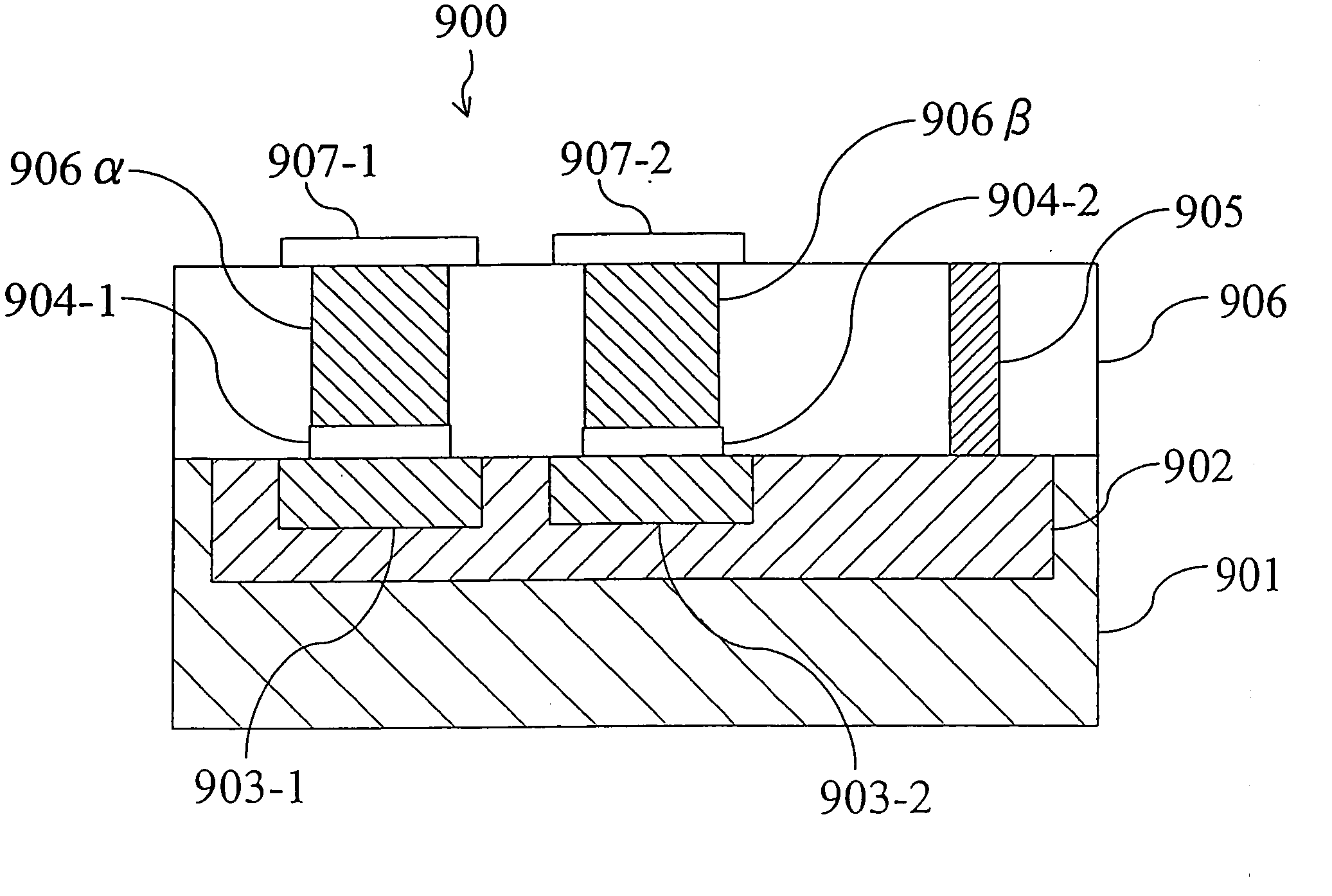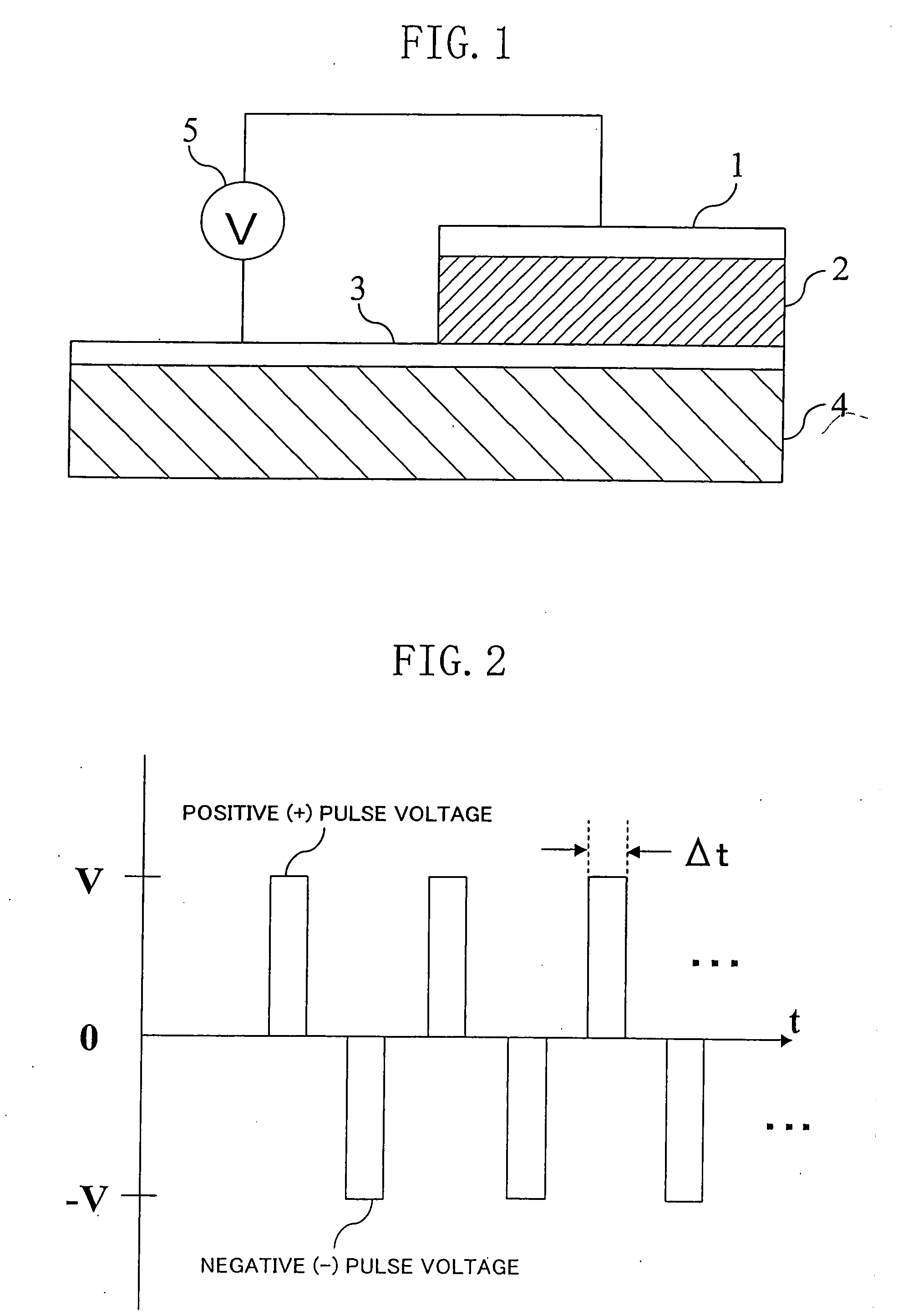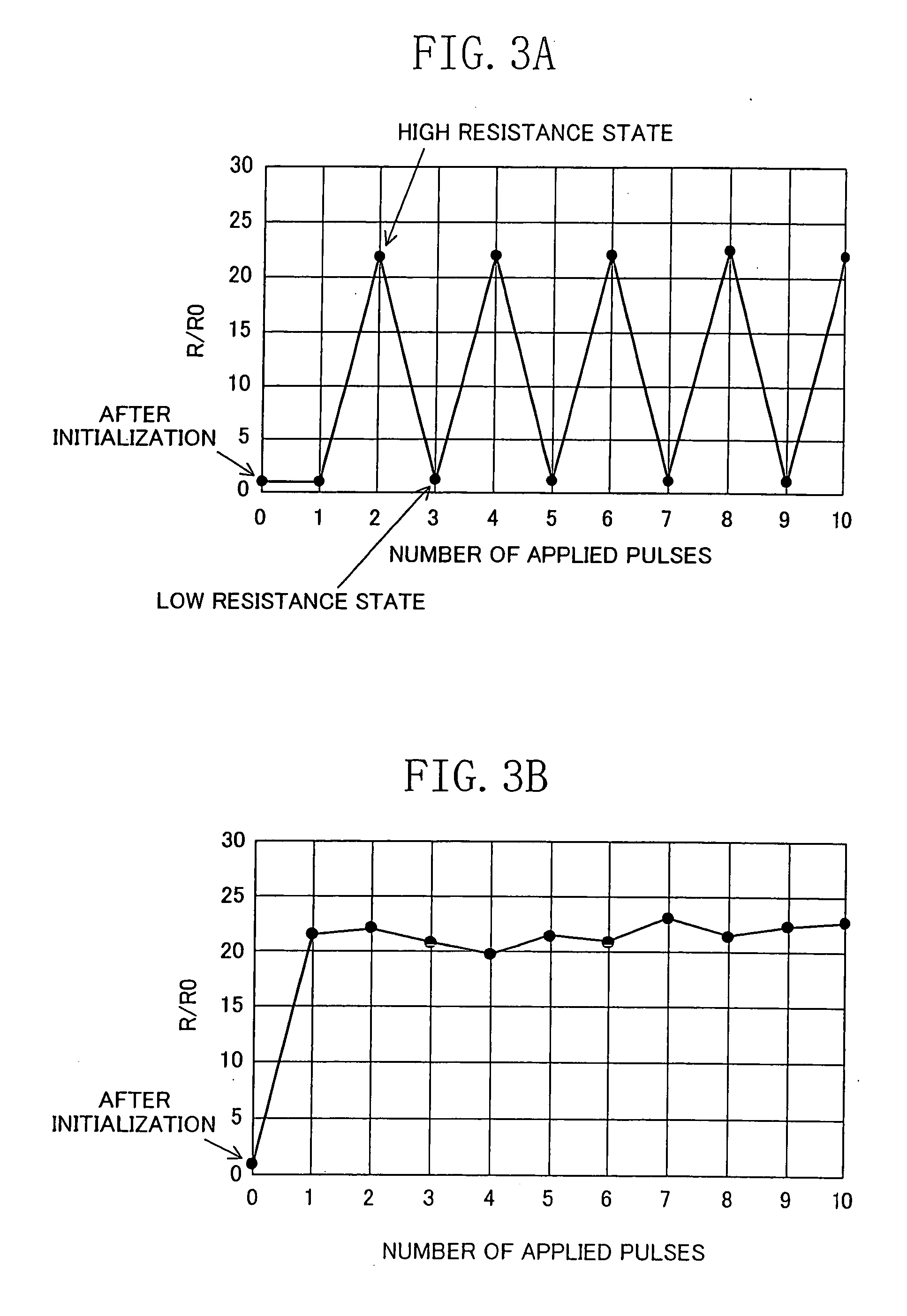Electric element, memory device, and semiconductor integrated circuit
a memory device and integrated circuit technology, applied in the direction of digital storage, diodes, instruments, etc., can solve the problems of reducing shortening the read and write time, and complicated production process, so as to increase the resistance value and reduce the resistance value of the layer
- Summary
- Abstract
- Description
- Claims
- Application Information
AI Technical Summary
Benefits of technology
Problems solved by technology
Method used
Image
Examples
example 1
[0068]To realize the state-variable material layer 2 having the above-described characteristics (variable-resistance characteristic and diode characteristic), the upper electrode 1 and the lower electrode 3 are formed of different materials having different work functions in the electric element of FIG. 1. The reasons therefor are described below.
[0069]
[0070]We carried out experiments on the following three types of electric elements.[0071]Sample (A): Electric element in which the work function of the upper electrode 1 is smaller than that of the lower electrode 3.[0072]Sample (B): Electric element in which the work function of the upper electrode 1 is greater than that of the lower electrode 3.[0073]Sample (C): Electric element in which the work function of the upper electrode 1 is equal to that of the lower electrode 3.
[0074]After the formation of sample (A), sample (B) and sample (C), a pulse voltage (voltage value: +3 V, pulse width: 10 μsec) was applied to the state-variable ma...
example 2
[0166]To realize the state-variable material layer 2 having the above-described characteristics (variable-resistance characteristic and diode characteristic), a state-variable material which has nonuniform crystallinity is used for the state-variable material layer 2 in the electric element of FIG. 1. The reasons therefor are described below.
[0167]
[0168][State-Variable Material Layer Formation Method 1]
[0169]The temperature of the substrate 4 on which the lower electrode 3 has been formed was increased to the vicinity of the crystallization temperature of a state-variable material used for the layer 2 (e.g., about 600° C. for CuFe2O4) to form the state-variable material layer 2. The thus-formed state-variable material layer 2 was subjected to an X-ray diffraction analysis to examine distortion of the crystalline structure, and as a result, it was found that the state-variable material layer 2 exhibits a sharp diffraction peak (a diffraction peak having a large intensity) at a positi...
embodiment 1
Definition of Graphical Symbol
[0197]An electric element of embodiment 1 of the present invention is described. We define the graphical symbol of the electric element of embodiment 1 as shown in FIG. 10. In the electric element 102 shown in FIG. 10, when a pulse voltage is applied between a terminal 101-1 and a terminal 101-2 such that the terminal 101-1 becomes positive (+) with respect to the terminal 101-2, the resistance value of the electric element 102 decreases. When a pulse voltage is applied between the terminal 101-1 and the terminal 101-2 such that the terminal 101-1 becomes negative (−) with respect to the terminal 101-2, the resistance value of the electric element 102 increases. Further, the electric element 102 shown in FIG. 10 exhibits a diode characteristic such that the direction extending from the terminal 101-1 to the terminal 101-2 is “forward direction” and the direction extending from the terminal 101-2 to the terminal 101-1 is “reverse direction”.
[0198]
[0199]N...
PUM
 Login to View More
Login to View More Abstract
Description
Claims
Application Information
 Login to View More
Login to View More - R&D
- Intellectual Property
- Life Sciences
- Materials
- Tech Scout
- Unparalleled Data Quality
- Higher Quality Content
- 60% Fewer Hallucinations
Browse by: Latest US Patents, China's latest patents, Technical Efficacy Thesaurus, Application Domain, Technology Topic, Popular Technical Reports.
© 2025 PatSnap. All rights reserved.Legal|Privacy policy|Modern Slavery Act Transparency Statement|Sitemap|About US| Contact US: help@patsnap.com



